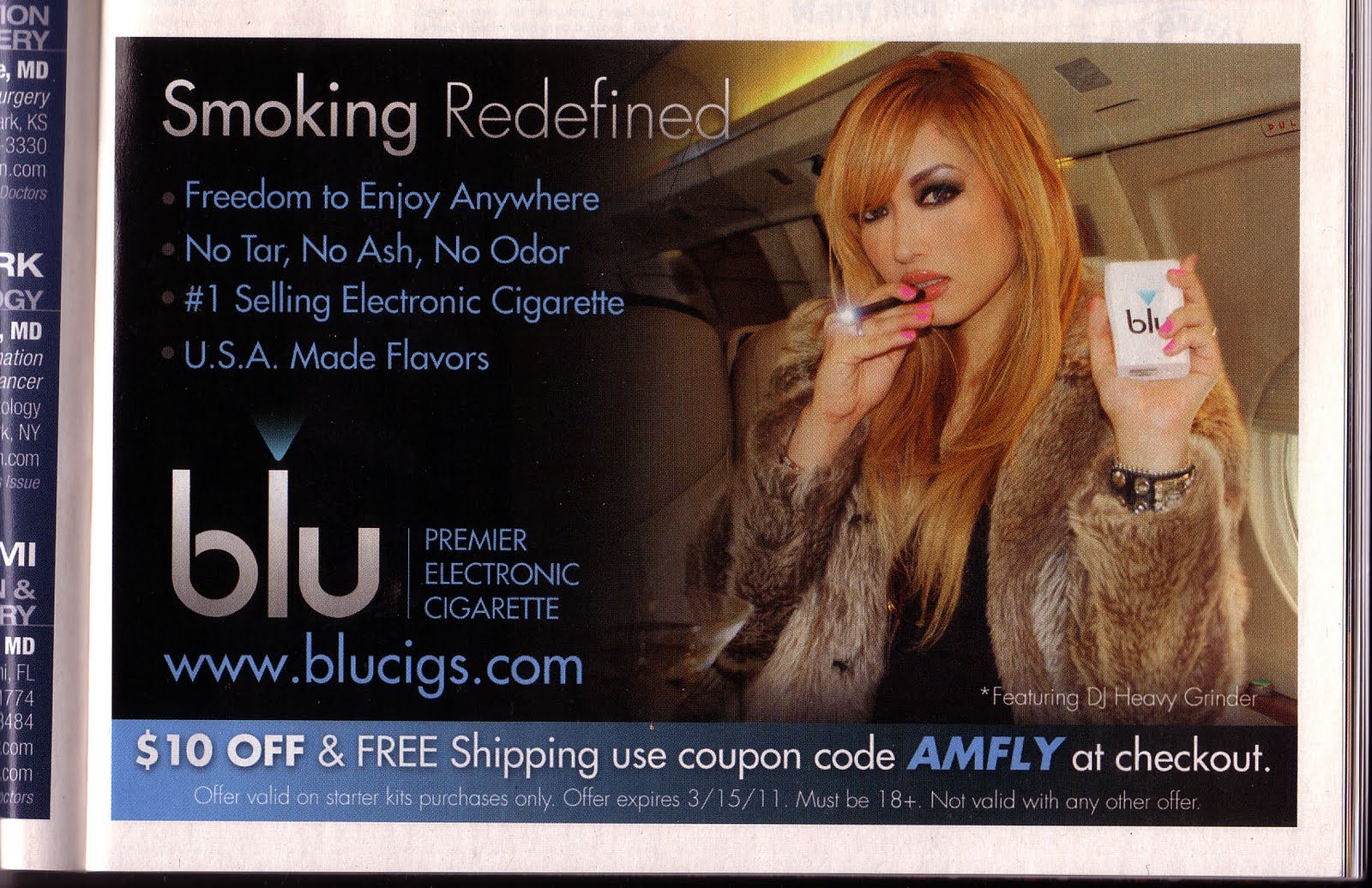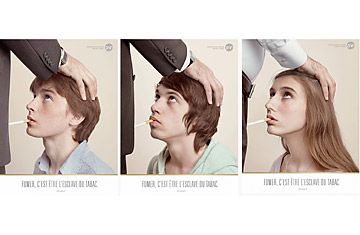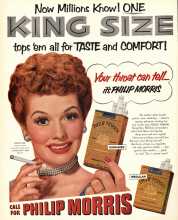
Many public health officials fear that e-Cigarettes could lead non-smokers to “light up” and electronic smoke and eventually move onto the “real” stuff. Also, many anti-tobacco advocates just don’t like the idea of making ciarette smokers feel like they are a member of the “norm” and fear they are going to “lose ground” to the smokers again.
Big Tobacco Back On TV
A new TV advert for a brand of electronic cigarettes marks the first time in decades cigarettes of any sort have been promoted on US television. Anti-smoking campaigners

fear the rapid growth of tobacco-free cigarettes could undermine years of successful anti-smoking efforts.
A handsome actor poses and struts on a beach in a stylishly shot black-and-white television spot. He puts the cigarette to his lips, takes a puff, and exhales a rich flume.
“Blu lets me enjoy smoking without it affecting the people around me, because it’s vapour not tobacco smoke,” says Stephen Dorff, the scruffy heartthrob star of The Immortals.
“We’re all adults here, it’s time we take our freedom back.”
Freedom Back for Smokers?
The launch this autumn of the advert for blu eCigs marks a turning point in the fast-growing US market for electronic cigarettes, which use an electronic mechanism to warm a liquid nicotine solution and release mist into the lungs.
Most living Americans had never before seen a cigarette advertised on television – they were banned in 1971.
But the electronic cigarettes fall outside that law, since they contain no tobacco. That is just one way they fall into what one anti-smoking campaigner calls a regulatory “no man’s land”.
Electronic cigarettes have exploded in popularity in the US since they first appeared on the market in 2007. Blu is just one brand, with NJOY, SmokeAnywhere, Joye eGo, and many more also available.
Their appeal stems from perceptions – as yet untested by science – that they are safer than tobacco cigarettes and can even help smokers kick the habit.
And because they contain no tobacco, the e-cigarettes seem exempt, for now, from ever-stricter public smoking bans.
Since their emergence onto the US market, US sales have risen from $5m (£3.1m) to an estimated $250m, according to UBS estimates.

Amid the explosive growth, smoking opponents are eyeing the devices warily.
Danny McGoldrick Fears This Could Lead to A Restriction In “Tobacco Free” Laws
“We know that smoke-free laws encourage smokers to try to quit,” says Danny McGoldrick, vice-president of research at Campaign for Tobacco-Free Kids.
McGoldrick Still Thinks It Is Harmful, If Only Symbolically
If electronic cigarettes keep people smoking who would otherwise quit, that is harmful, he says.
Once sold mostly online and in small kiosks, they were given a huge boost in April when US tobacco giant Lorillard Inc purchased blu from the brand’s creators for $135m (£84m).
Lorillard executives said they foresaw rapid growth and were keen to put their weight behind the brand.
Since the acquisition blu has seen a five-fold increase in its retail availability, and will be available in some 50,000 shops by the end of this year. The national advertising campaign launched in October.
“They’ve come in and put in their tremendous resources and experience and they’ve put us on steroids and given us the resources to grow well,” blu’s creator and president Jason Healy said of the Lorillard acquisition.
“We’ve established blu as a lifestyle brand for smokers.”
McGoldrick Argues The e-Cigarettes Need More Scientific Research Into Hiding Health Hazards

Electronic cigarettes have been subjected only to minimal scientific study – not enough to demonstrate whether they are safer than tobacco cigarettes or effective as a smoking cessation product like nicotine gum or patches.
The World Health Organization has warned electronic cigarettes “pose significant public health issues and raise questions for tobacco control policy and regulation”.
And a 2009 test by the US Food and Drug Administration of electronic cigarettes – none from blu – found traces of cancer-causing chemicals and other toxic chemicals.
Electronic cigarettes are either banned or heavily regulated in Australia, Brazil, Canada, Germany and several other countries.
But in the US, at present electronic cigarettes “are essentially unregulated” says McGoldrick.
Unless they make a therapeutic claim, for example that they can help people quit smoking, they fall in the cracks between federal tobacco regulations and rules covering drug devices like insulin pumps,
In the new commercial, Lorillard appears to have reached into the bag of advertising tricks that got previous generations of Americans hooked on cigarettes, tobacco industry critics say.

Cynthia Hallet Offers Her Opinion Against “The Freedom to Smoke” – Even It Is Found to Be Unharmful She Argues This Freedom Could Lead to Worse Choices
“It feels like what they’re trying to do is re-establish a norm that smoking is okay, that smoking is glamorous and acceptable,” says Cynthia Hallett, executive director of Americans for Non-Smokers’ Rights.
The blu advert stokes the spirit of rebellion that appealed to smokers when they first started as adolescents, says David Abrams, executive director of the Schroeder Institute for Tobacco Research and Policy Studies at Legacy, an anti-tobacco organisation.
This time around, instead of defying parents and teachers, the ad encourages smokers to rebel against more recent anti-smoking social norms.
“They’re capitalising on that with adult smokers by basically saying ‘don’t let society tell you what to do’,” Abrams says.
“‘You have the freedom to smoke. Thumb your nose at the anti-smoking policies and the FDA.'”
The thick flume of smoke streaming from Stephen Dorff’s mouth creates the urge in smokers to reach for their pack, even as the seaside setting evokes associations of clean, fresh air, says Joseph Cappella, a professor of communication at the University of Pennsylvania.
“The environment is presented as a way of making clear there is a cleanliness, a healthiness linked to this nicotine delivery device,” he says.
Electronic cigarettes are sold in a variety of flavours: The Eonsmoke brand, for one, sells cartridges in apple, menthol, strawberry, “mojito”, “tobacco” and others.
Extensive research has shown flavoured tobacco appeals to young smokers and adolescents who are not ready for standard cigarettes, Abrams says.
Anti-smoking campaigners including the American Cancer Society fear electronic cigarettes could get young smokers and adolescents hooked on nicotine – and later onto tobacco.
Healy rejects that. He says blu’s target customers are 35-55 years old and have been smoking for years.
“This is about giving smokers freedom and choice,” says Healy, an Australian former professional basketball player.

Soon after e-cigarettes arrived on the market the FDA moved to regulate them under its authority over drug delivery devices, but a court rejected the move.
FDA Plans to Add Restrictions to e-Cigarettes
The FDA has since hinted it may regulate them like tobacco products and an extensive rule-making procedure is underway. That would give the agency authority to restrict how they are marketed and labelled.
Healy says regulation could help the category in the long-run by reining in makers of poor-quality products.
“There’s a lot of cowboys out there who can’t afford to do a lot of things you need to do to ensure product quality and safety,” he says. “It’s going to be great for the consumer.”
Anti-tobacco campaigners say they’re keeping an open mind about electronic cigarettes.
“We are not against them being on the market but they should be responsibly regulated and marketed and tracked over time in a way that protects the public health and fully informs consumers of their effects and indications for use,” says Abrams.
“The introduction of these new non-combustible products that are appealing like e-cigarettes could have great public health value.”